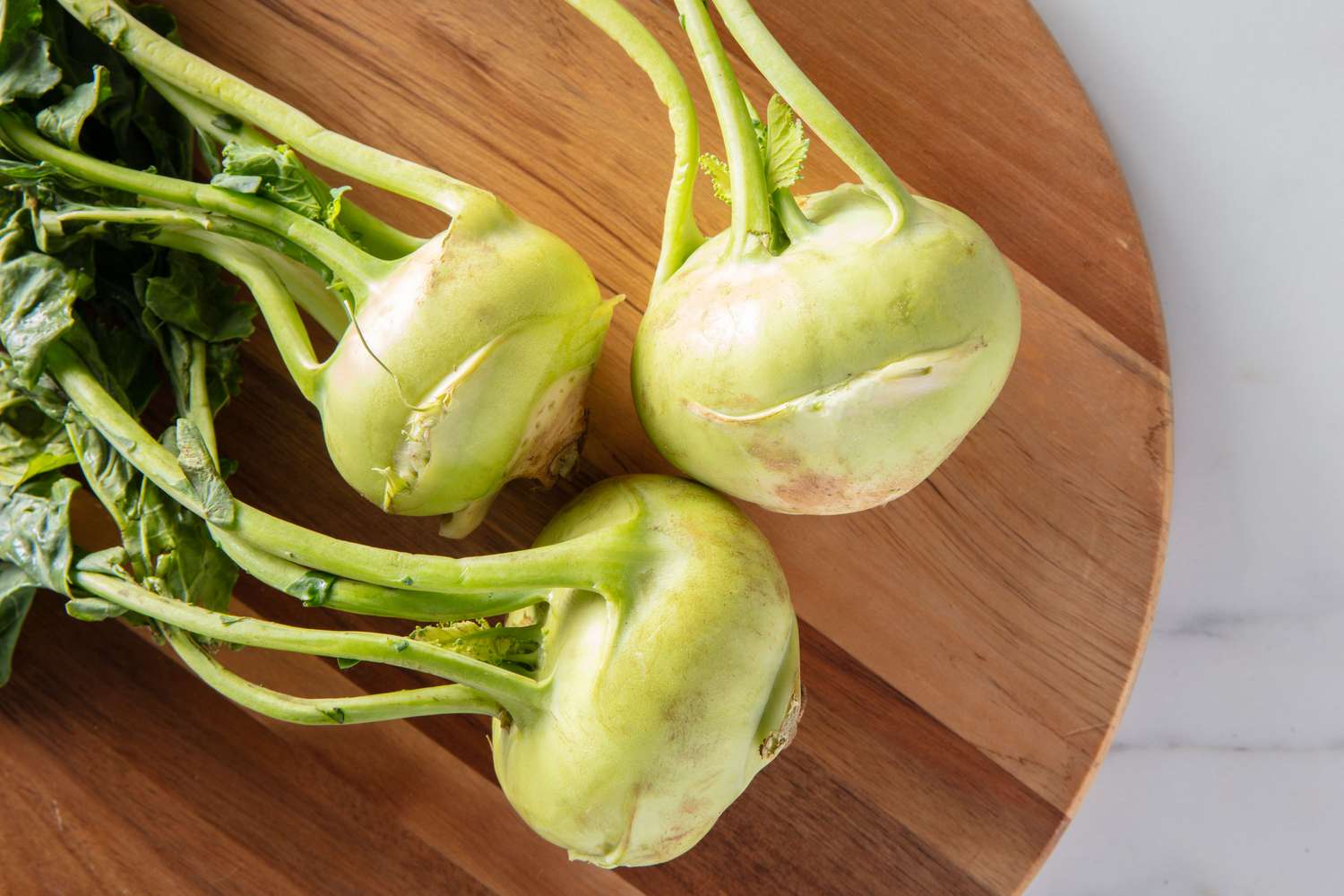
26 interesting facts about Kohlrabi
- 👁️ 1478
Kohlrabi, with its peculiar name and even more unusual appearance, is a vegetable that intrigues and delights in equal measure. A member of the brassica family, which includes broccoli, cauliflower, and kale, kohlrabi is cherished around the world for its versatility in the kitchen and its nutritional benefits. First cultivated in Europe around the 16th century, this vegetable has since spread globally, adapting to various cuisines and cooking styles. Its mild, sweet flavor, reminiscent of broccoli stems and cabbage, makes it a favorite among chefs and home cooks looking to add crunch and nutrition to their dishes. Here are 26 interesting and informative facts about kohlrabi that showcase its unique qualities and contributions to culinary traditions and health.
- Kohlrabi is also known by its scientific name, Brassica oleracea var. gongylodes.
- The name “kohlrabi” is derived from the German words “kohl” (cabbage) and “rabi” (turnip), reflecting its appearance and taste.
- It is known as a “German turnip” though it is not a turnip but related to cabbage and broccoli.
- Kohlrabi can be eaten both raw and cooked, offering a versatile range of culinary uses.
- The vegetable comes in two main colors: green and purple, though the flesh inside is usually light green or white.
- Kohlrabi is rich in nutrients, containing high levels of vitamin C, potassium, and fiber.
- It also provides a good amount of the B vitamins, including vitamin B6, which is essential for energy metabolism and brain health.
- The plant grows above ground, not underground like many other root vegetables, with a bulbous stem that is eaten.
- Kohlrabi leaves are edible and can be cooked similarly to collard greens or kale.
- This vegetable has been grown and consumed for more than 3,000 years.
- Kohlrabi thrives in cooler climates, making it a popular choice for autumn and spring gardens.
- It is considered one of the easiest brassica vegetables to grow, resistant to many pests that commonly affect other members of its family.
- The vegetable’s taste and texture are often described as a cross between a cabbage and a broccoli stem but sweeter.
- Kohlrabi is a low-calorie vegetable, making it a healthy addition to weight loss diets.
- The fiber content in kohlrabi helps promote digestive health and prevent constipation.
- Its potassium levels are beneficial for maintaining healthy blood pressure and cardiovascular health.
- In traditional medicine, kohlrabi has been used to aid digestion and boost the immune system.
- The bulb of the kohlrabi is the most commonly consumed part, but the stems and leaves are also nutrient-rich.
- Kohlrabi can be stored in the refrigerator for several weeks without significant loss of quality.
- It is commonly used in salads, slaws, soups, and stir-fries, thanks to its versatility.
- The vegetable is a good source of antioxidants, including isothiocyanates and sulforaphane, which are known for their cancer-preventing properties.
- In India, kohlrabi is often used in curries and pickles.
- When selecting kohlrabi at the market, it’s best to choose smaller bulbs, as they tend to be more tender and flavorful.
- The entire kohlrabi plant, including the bulb, stems, and leaves, is edible and nutritious.
- It requires well-drained soil and regular watering to grow successfully.
- Kohlrabi has gained popularity in recent years as part of the movement toward healthier, plant-based diets.
Kohlrabi, with its distinctive taste and nutritional profile, is a testament to the diversity and richness of the vegetable world. Its adaptability in the kitchen, combined with health benefits that can’t be overlooked, makes it a vegetable worthy of attention. Whether enjoyed raw in a fresh salad or cooked into a warm, comforting dish, kohlrabi offers a delightful experience that bridges the gap between the familiar and the exotic. As more people discover its charms, kohlrabi stands poised to become a staple in gardens and kitchens around the world, celebrated for both its flavor and its contribution to a healthy lifestyle.











